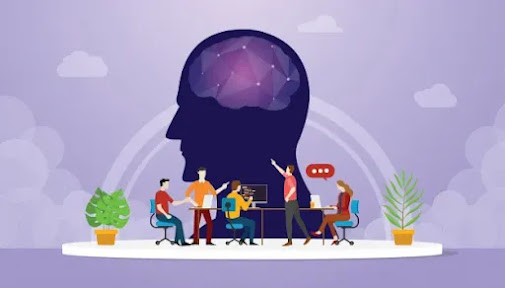4.Learning and development strategies
Learning and Development Strategies
Leadership is communicating people’s worth and potential so clearly that they come to see it in themselves.
STEPHEN COVEY, GLOBAL EDUCATOR AND BUSINESS LEADER
An effective learning and development (L&D) plan is essential for having a contented, driven team. The greatest businesses in the world have been investing a lot of money in creating and managing their internal L&D departments for this reason.
Your employees' learning needs cannot be met by providing them with basic training and an internal wiki or shared knowledge base. There are many different staff training methods available to you when creating or revising your business training programme, including roleplaying, simulation training, collaborative training, and more than a dozen others.
It would be quite beneficial to observe how other top businesses approach their learning and development (L&D) initiatives and how they use various training delivery strategies in their corporate training. (Adelina Karpenkova ( 2023 Feb ))
What Is A Learning And Development Strategy?
To put it simply, a learning and development strategy matches the goals and strategies of the company with the competencies of its workforce. The plan can be implemented decentralised throughout an enterprise or organisation, or it can be carried out by a single team.
Businesses are better positioned for success and long-term growth when they assess the skill set of their workforce and develop a learning strategy that enhances employees' talents. Stated differently, it benefits the bottom line!
The Business Case For A Learning And Development Strategy
The following five factors indicate why your company should investigate and execute an L&D strategy:
- Attraction : If you're perceived as an employer who supports professional development, you'll be more appealing.Onboarding: Knowledge sharing facilitates the onboarding of new team members and accelerates their productivity. It is an effective learning and development method.
- Retention : People like the chance to grow professionally and pick up new abilities, and they particularly value the chance to be rewarded to do so.
- Employee Engagement : Higher levels of engagement and employee satisfaction have been associated with effective L&D strategies.
- ROI: It has been demonstrated that L&D helps companies accomplish more business objectives, increase organisational effectiveness, and meet targets.(Tamara Wilson)
The goal of learning and development is to support people in realising their full potential and to assist the company find the talent it needs now and in the future.
The following actions will provide a strong basis for your learning and development strategy, enabling individuals to gain knowledge and contribute to business outcomes, even if every organisation is unique.
1. Know where you’re going
2. Identify who will determine the learning and development vision and objectives
3. Conduct an internal skill gap analysis
4. Identify core learning and development needs
5. Know what success looks like
6. Create learner profiles
7. Identify your delivery methods with a 70-20-10 learning strategy
References
- Karpenkova A. (2023 Feb 02), learning and development (L&D) strategy, [Online], Available at: https://whatfix.com/blog/learning-and-development-examples/ [ Accessed on 12th of November 2023]
- Wilson T. , The Business Case For A Learning And Development Strategy
[Online], Available at: https://peoplemanagingpeople.com/how-to-guide/learning-development-strategy/[ Accessed on 11th of November 2023]




Good Article Dinesh. The goal of learning and development is to develop or change the behavior of individuals or groups for the better, sharing knowledge and insights that enable them to do their work better, or cultivate attitudes that help them perform better (Lievens, 2011)
ReplyDeleteThis article concisely underscores the pivotal role of a learning and development strategy in aligning company objectives with workforce competencies. The flexibility in implementation, whether decentralized or centralized, reflects adaptability to diverse organizational structures. The emphasis on enhancing employee talents not only promotes long-term growth but also directly impacts the bottom line, aligning with contemporary principles of strategic human resource management.
ReplyDeleteGood Article Dinesh, Learning and development (L&D) is a function within an organization that is responsible for empowering employees’ growth and developing their knowledge, skills, and capabilities to drive better business performance. if you need more information, follow "L&D Play book of the digital age." Author, Brandon Carson
ReplyDeleteDeveloping a robust Learning and Development (L&D) strategy aligns employees' capabilities with company goals, fostering growth and satisfaction. Effective strategies attract, retain talent, boost engagement, and enhance business outcomes through continual skill enhancement. What aspect of L&D strategy resonates with your organization's goals?
ReplyDeleteDear Dinesh,
ReplyDeleteGood article. I would like to make a query.
How can companies ensure continuous adaptation and evolution of their learning and development strategies to keep pace with changing business needs and technological advancements?
Dear Dinesh,
ReplyDeleteThis insightful article underscores the pivotal role of a well-crafted Learning and Development strategy in fostering employee growth and organizational success.
This insightful exploration of Learning and Development (L&D) strategies effectively highlights their importance in shaping a thriving workplace. The emphasis on employee attraction, on boarding, retention, and ROI establishes a compelling business case. A well-structured guide for organizations aiming to optimize their workforce potential through thoughtful L&D planning.
ReplyDelete